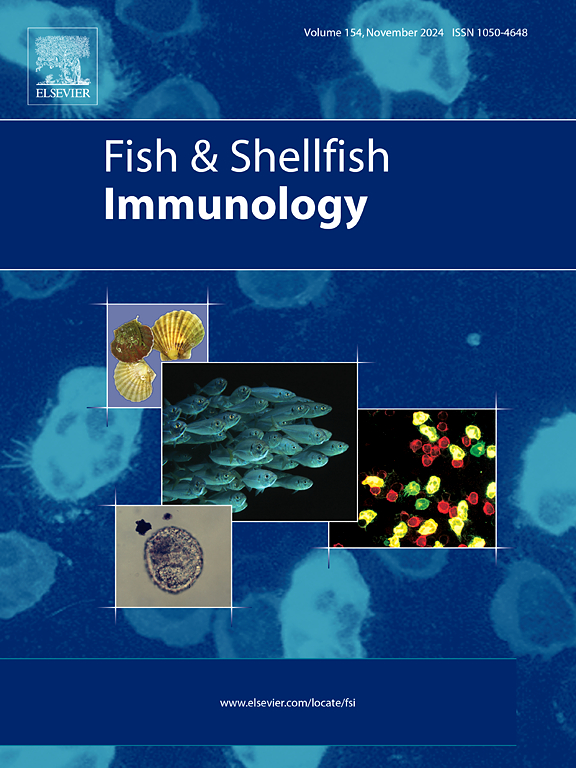Erythrocytes from gilthead seabream (Sparus aurata) and European sea bass (Dicentrarchus labrax) did not engage in phagocytosis
IF 4.1
2区 农林科学
Q1 FISHERIES
引用次数: 0
Abstract
Phagocytosis is a fundamental innate immune process primarily executed by vertebrate leucocytes. Fish erythrocytes are involved in immune functions, although their role in phagocytosis remains poorly investigated. Consequently, this study aimed to examine the potential phagocytic mechanisms of fish erythrocytes. To this end, systemic blood erythrocytes were isolated from the teleost gilthead seabream (Sparus aurata) and European sea bass (Dicentrarchus labrax) and incubated for various times (20, 40, 60, 80, 100, and 120 min) with formalin-inactivated bacteria or heat-killed yeasts labelled with fluorescein isothiocyanate. Their putative phagocytic properties and respiratory burst activity were investigated. Our results did not indicate variations in the phagocytic ability or phagocytic capacity of erythrocytes of seabream or sea bass incubated with the bacteria, whereas no activity was detected in the case of incubation with yeast. Additionally, no respiratory burst activity was detected in the erythrocytes of either fish species under any of the experimental conditions tested. Using fluorescence microscopy, it was observed that erythrocytes could bind bacteria to their surface membranes. However, this attachment process was rarely seen with yeast cells. In contrast, examination of the fine structure of erythrocytes using transmission electron microscopy showed distinctive inward and outward folding (pseudopodia formation) and some cytoplasmic vesicles in both species. The results of our study indicate that erythrocytes from gilthead seabream and sea bass did not exhibit phagocytic capabilities when exposed to these specific target particles. Additional studies are necessary to gain more insights into how they contribute to the immune system of fish.

求助全文
约1分钟内获得全文
求助全文
来源期刊

Fish & shellfish immunology
农林科学-海洋与淡水生物学
CiteScore
7.50
自引率
19.10%
发文量
750
审稿时长
68 days
期刊介绍:
Fish and Shellfish Immunology rapidly publishes high-quality, peer-refereed contributions in the expanding fields of fish and shellfish immunology. It presents studies on the basic mechanisms of both the specific and non-specific defense systems, the cells, tissues, and humoral factors involved, their dependence on environmental and intrinsic factors, response to pathogens, response to vaccination, and applied studies on the development of specific vaccines for use in the aquaculture industry.
 求助内容:
求助内容: 应助结果提醒方式:
应助结果提醒方式:


